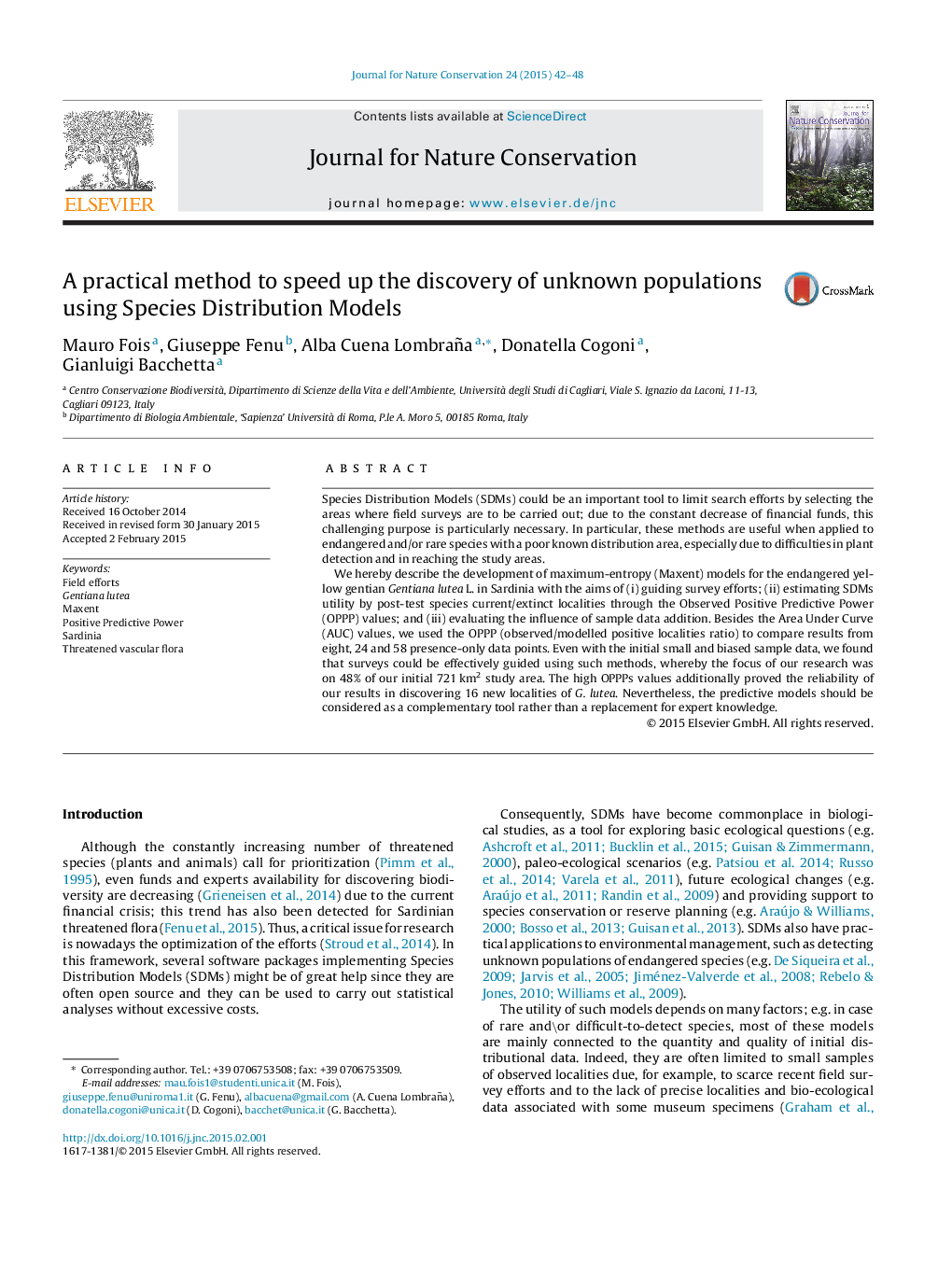| Article ID | Journal | Published Year | Pages | File Type |
|---|---|---|---|---|
| 4399848 | Journal for Nature Conservation | 2015 | 7 Pages |
Species Distribution Models (SDMs) could be an important tool to limit search efforts by selecting the areas where field surveys are to be carried out; due to the constant decrease of financial funds, this challenging purpose is particularly necessary. In particular, these methods are useful when applied to endangered and/or rare species with a poor known distribution area, especially due to difficulties in plant detection and in reaching the study areas.We hereby describe the development of maximum-entropy (Maxent) models for the endangered yellow gentian Gentiana lutea L. in Sardinia with the aims of (i) guiding survey efforts; (ii) estimating SDMs utility by post-test species current/extinct localities through the Observed Positive Predictive Power (OPPP) values; and (iii) evaluating the influence of sample data addition. Besides the Area Under Curve (AUC) values, we used the OPPP (observed/modelled positive localities ratio) to compare results from eight, 24 and 58 presence-only data points. Even with the initial small and biased sample data, we found that surveys could be effectively guided using such methods, whereby the focus of our research was on 48% of our initial 721 km2 study area. The high OPPPs values additionally proved the reliability of our results in discovering 16 new localities of G. lutea. Nevertheless, the predictive models should be considered as a complementary tool rather than a replacement for expert knowledge.
